National Ballet of Japan, Giselle Review 5*
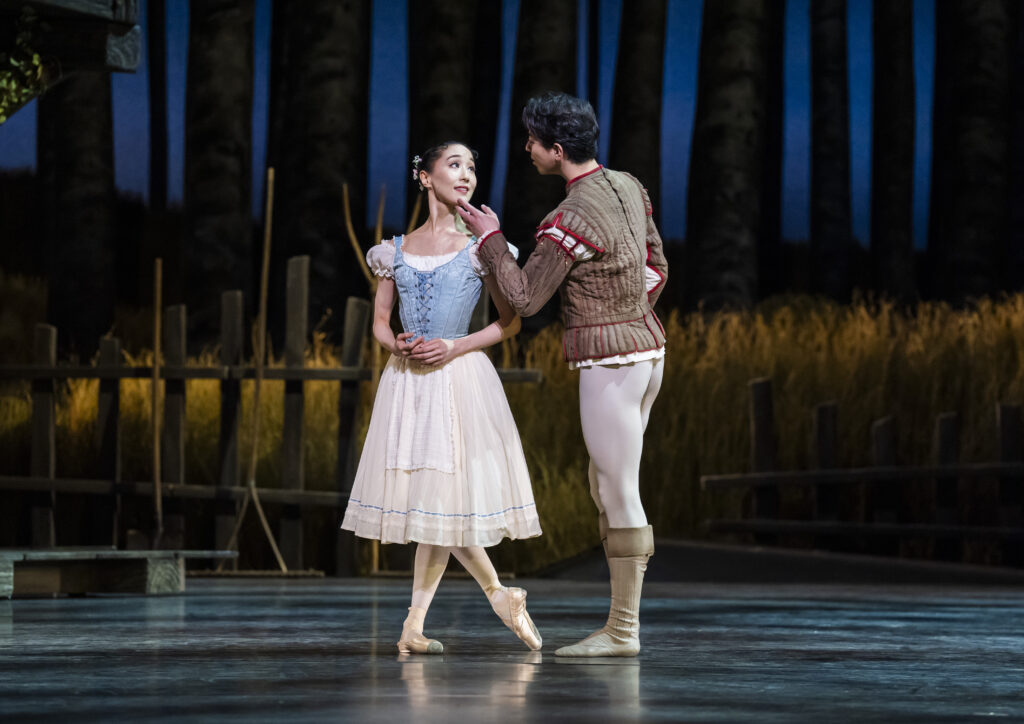
For its London debut, National Ballet of Japan brought a compelling, beautifully danced production of Giselle to RBO
This article was first published on London Unattached (london-unattached.com)
Giselle is the quintessential Romantic ballet. Premiered in at the Paris Opera in 1841, it reflects many of the preoccupations of Romanticism: nature as a repository of all that’s good, yet also harbouring otherworldly, often malevolent beings; a fascination with a mythical past; and the primacy of heightened feelings such as love, betrayal and forgiveness.
The plot, conceived by the novelist and playwright Théophile Gautier speaks to all that: at grape-harvest time in an idealised medieval village, Giselle, a beautiful, innocent and fragile peasant girl, who loves to dance, falls madly in love with a handsome stranger, unaware that he is actually the local aristocrat Albrecht, out to have a little inconsequential fun.
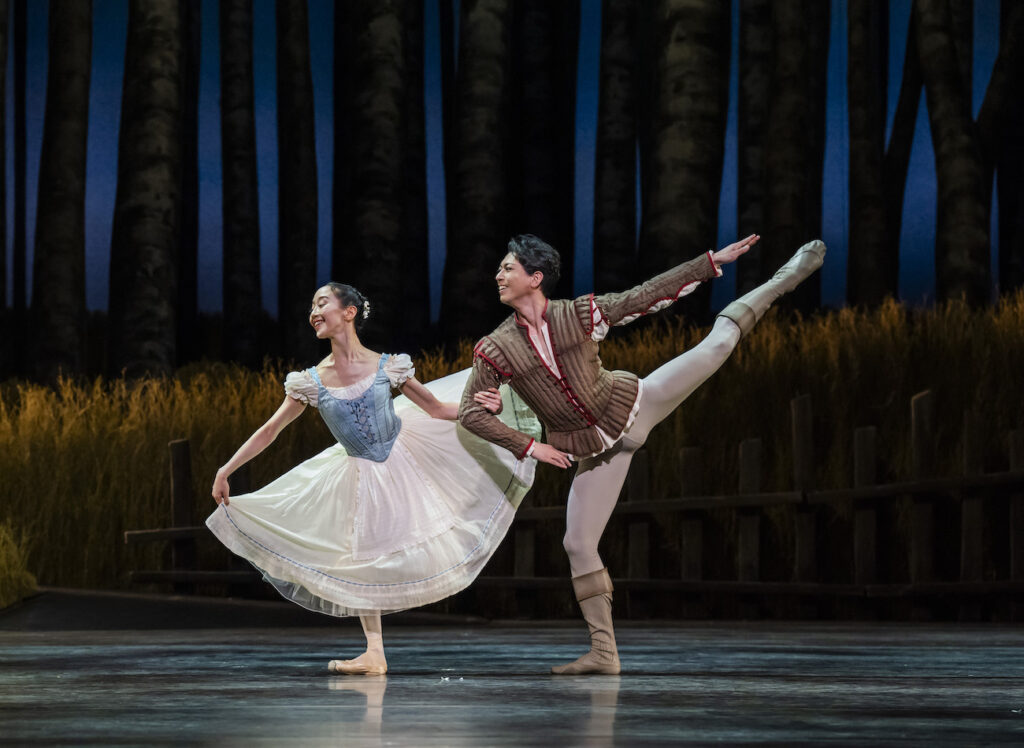
Yui Yonezawa and Shun Izawa in National Ballet of Japan Giselle © ROH Tristram Kenton
When his deception is revealed Giselle goes mad and dies of a broken heart. Act II is set at night in a menace-laden forest, where the Wilis of ancestral German legend, the spirits of betrayed young women who died before their wedding day, force any man who ventures into their realm to dance until they die.
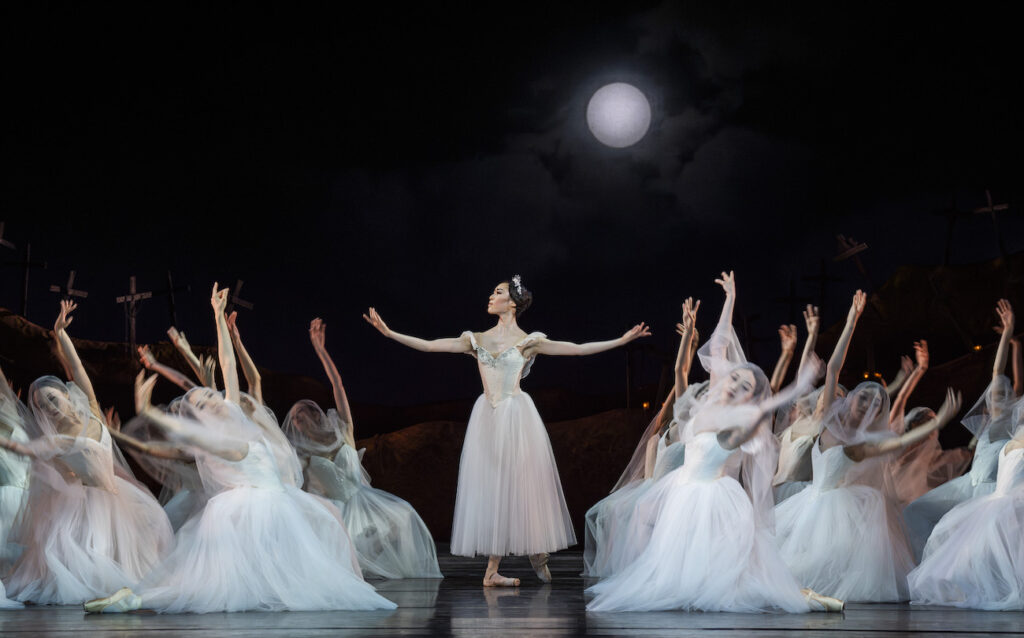
Akari Yoshida as Myrtha and artists of National Ballet of Japan in Giselle © ROH 2025 Tristram Kenton
A repentant Albrecht comes to lay flowers at Giselle’s grave; but he is soon found by the Willis under their implacable Queen Myrtha, and is only just saved from that grisly fate by the intervention of Giselle’s spirit.
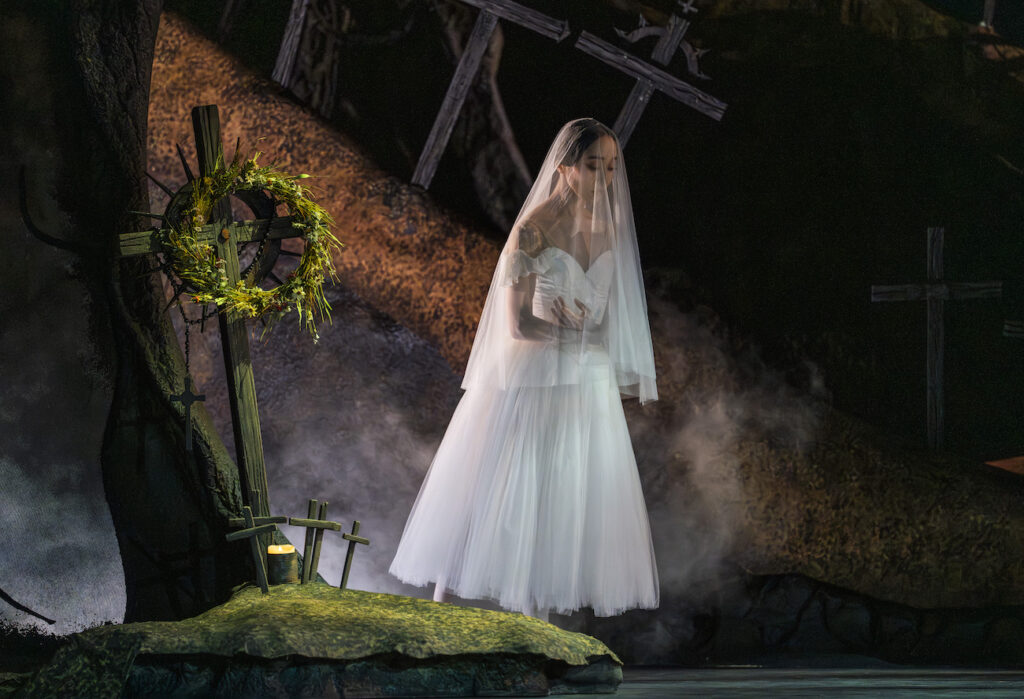
Yui Yonezawa as Giselle in National Ballet of Japan Giselle © RIH 2025 Tristram Kenton
At the end of both Acts there shouldn’t be a dry eye in the house – combine that emotional pull with Adolphe Adam’s gloriously eloquent score, the boisterous dances of village life in Act I and the ethereal presence of massed ranks of Wilis in diaphanous white skirts in Act II and it’s easy to understand the enduring power of this ballet.
All major companies the world over have their own Giselle; it’s no wonder then, that when the former Royal Ballet Japanese star, Miyako Yoshida, took over as director of the National Ballet of Japan in 2020, she was determined the company should have a Giselle to be proud of, one that would combine the best of Western ballet with the best of Japanese culture, and mark a further step in the path of a very young company, founded only 28 years ago. And, of course, Giselle was one of Yoshida’s career-defining roles.
Yoshida aced it. The production the National Ballet of Japan brought to her former home offered a sold out audience at the Royal Opera House a magnificent experience, both visually and emotionally. Not a dry eye in the house, I would wager, certainly not mine…
Yoshida worked with the traditional choreography, re-worked in Russia by Petipa after the original Coralli/Perrot text, but brought in her former Royal Ballet colleague Alastair Marriott to freshen it up and provide additional dances. Together they fashioned a coherent, totally engaging account of the ballet.
She commissioned new sets and costumes from the vastly experienced Dick Bird, who created two atmospheric worlds: for Act I the brightly detailed village square, set against the ominous background of the forest.
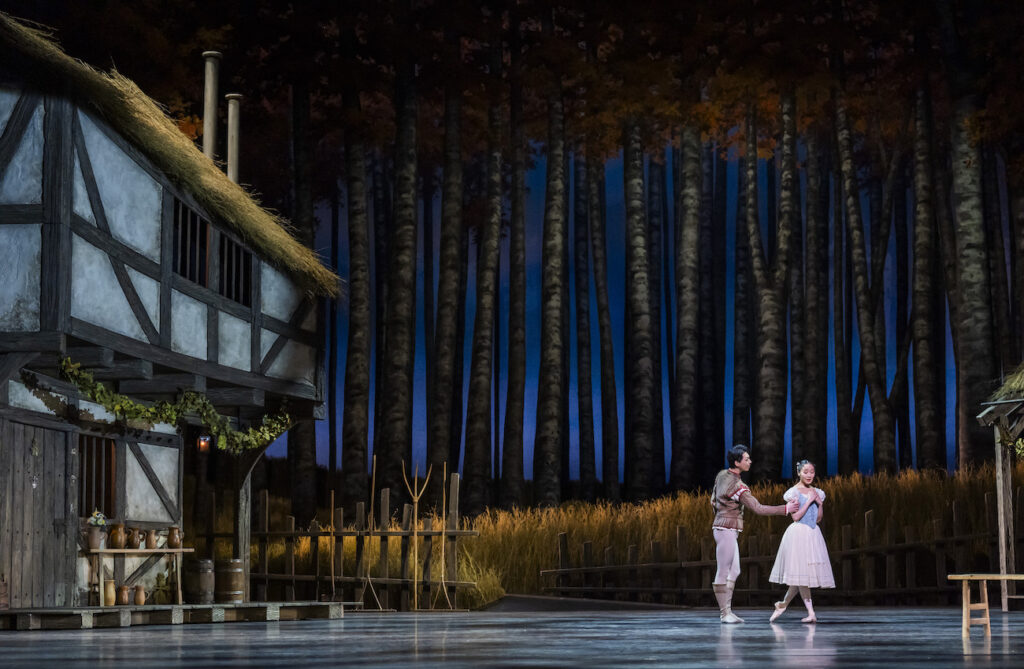
Shun Izawa as Albrecht, Yui Yonezawa as Giselle in National Ballet of Japan Giselle © ROH 2025 Tristram Kenton
Dick Bird’s true genius was revealed in Act II. Under a baleful, slightly occluded moon, the forest clearing is surrounded by uneven hillsides dotted with crosses, at the base of which tiny little lights flicker. It’s a chilly, malevolent burial site.
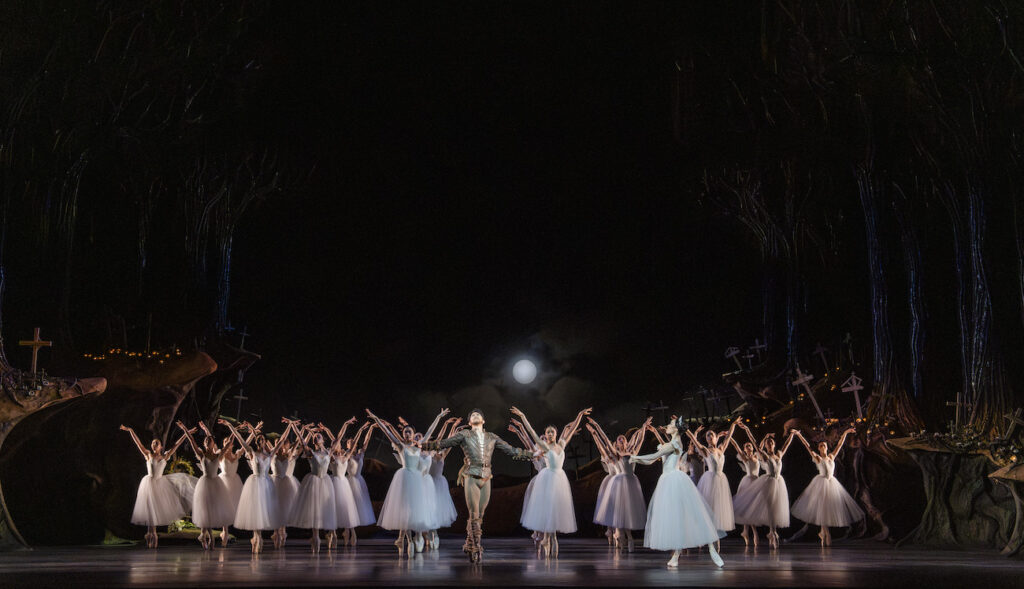
Artists of National Ballet of Japan in Giselle © ROH 2025 Tristram Kenton
All that would count for very little without superlative dancing, but the dancers of National Ballet of Japan rose to the occasion superbly. Costumed in earthy colours, the corps de ballet fully played their role in bringing Act I to life, always in character as busy villagers celebrating a successful grape harvest.
I felt the men, in particular, grabbed their chance to show off technique, only too aware, perhaps, that once Act I was over, there would be no further dancing for them.
Act II belongs to the women and is made memorable (or not) by the uniformity the Wilis are able to bring to their dances. Here the corps of 24 were truly impressive, looking and dancing as one, down to the perfect angle of tilted heads and poised hands.
On opening night the lead roles of Giselle and Albrecht were danced by principals Yui Yonezawa and Shun Izawa. In a case of life imitating art, only last November Yonezawa underwent an eight hour operation to correct a career- and indeed life-threatening heart condition – something, she says, which has helped redefine her perspective of Giselle.
Small and delicate with a steely technique, she was an endearing girly Giselle in Act I, her dancing joyous, her lines pure, making short work of the technical demands of the role, such as the fiendish diagonal hops en pointe.
Her confrontation with Albrecht’s aristocratic fiancée, Bathilde, was just the right combination of deference and rightful claim to the man; her mad scene was all the more affecting for eschewing histrionics.
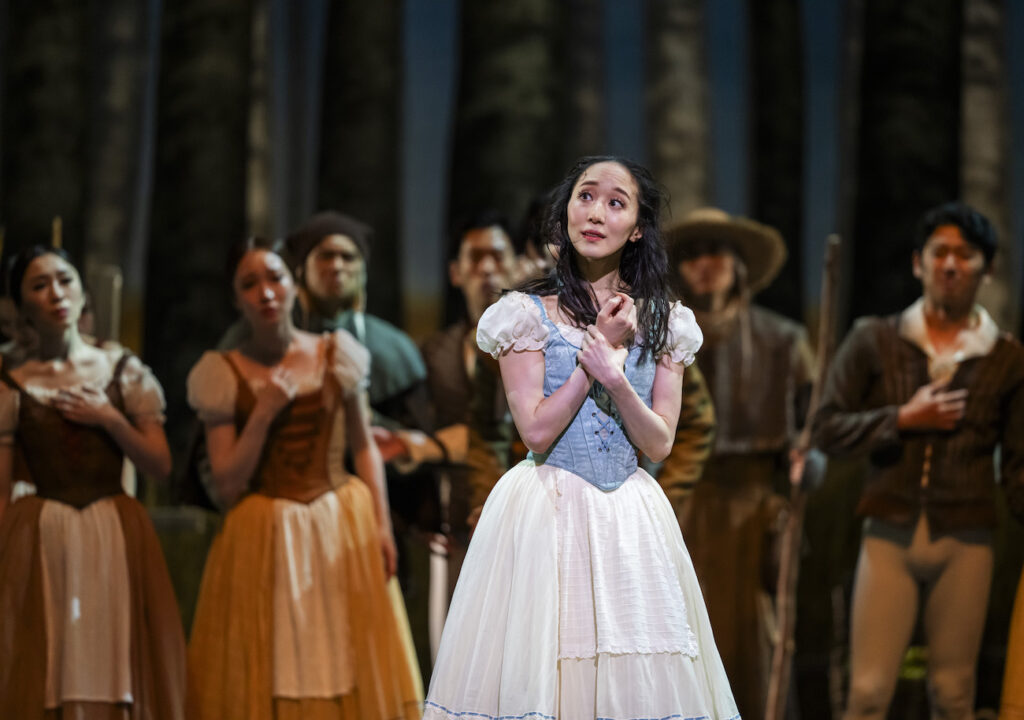
Yui Yonezawa and artists of National Ballet of Japan in Giselle © ROH 2025 Tristram Kenton
In Act II she was ethereal, as light as a puff of smoke, her physicality still between the two worlds of human and spirit
Izawa brought out the cad in Albrecht, even while abandoning himself to what he only realised was love when it was too late to matter. He is handsome, a very safe and attentive partner, and technically assured, delivering himself of the killing sequence of entrechats-six at the height Act II with aplomb.
There was tremendous chemistry between the two; as indeed there was between soloists Risako Ikeda and Shunsuke Mizui in the joyous, beautifully danced peasant pas de deux of Act I.
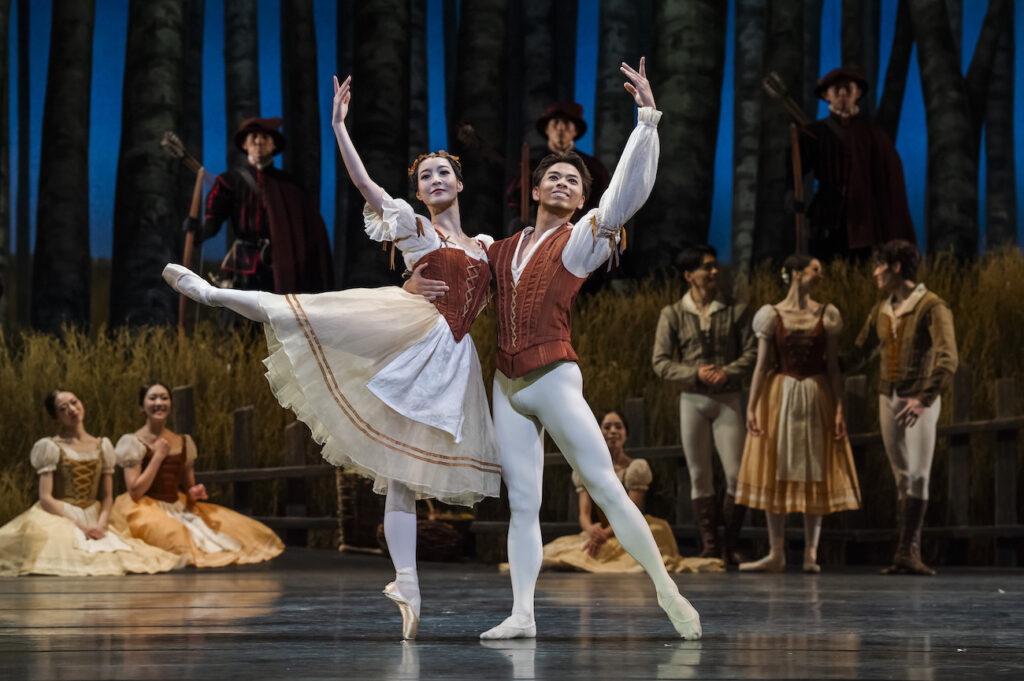
Risako Ikeda and Shunsuke Mizui on National Ballet of Japan Giselle © ROH 2025 Tristram Kenton
I was impressed by the clear, well-defined use of mime throughout, particularly by Yuna Seki as Giselle’s mother, Berthe; and Masahiro Nakaya brought credibility to the difficult role of Hilarion, the sincere woodsman whose unrequited love for Giselle brings about the tragic denouement.
The Royal Ballet Sinfonia, under the baton of Paul Murphy, offered an excellent, dancer-focused account of Adam’s score.
© Teresa Guerreiro
(Banner image © RBO 2025 Tristram Kenton)
National Ballet of Japan, Giselle is at the ROH 24-27 July 2025. Returns only
